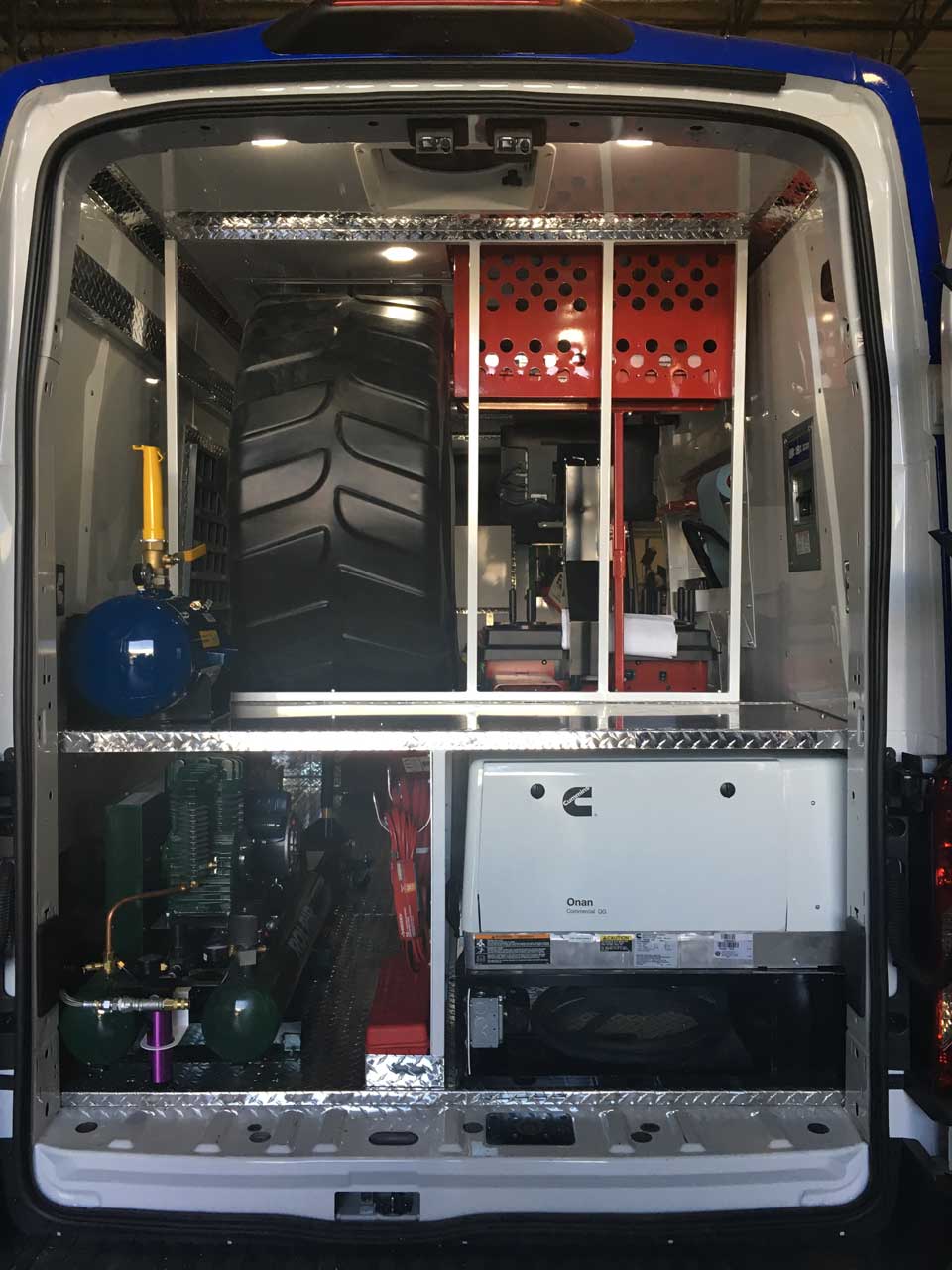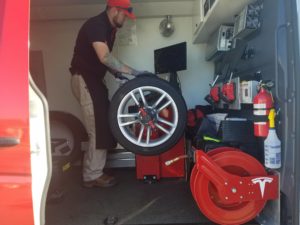Tire Service: Proven Approaches for Optimum Tire Maintenance and Care
From guaranteeing correct tire pressure to routine turning and alignment, there are tested approaches that can substantially prolong the life-span of your tires and enhance general driving experience. Allow's dig right into the globe of tire service and find the secrets to maintaining your tires in excellent shape for the lengthy haul - Flat Tire Repair Las Vegas.
Significance of Tire Pressure
Correct tire stress is a critical consider making sure ideal lorry efficiency and safety on the road. Keeping the suggested tire pressure levels supplied by the maker supplies many advantages. To start with, sufficient tire pressure promotes much better fuel performance, as under-inflated tires can bring about raised rolling resistance, creating the engine to function more difficult and take in more fuel. Secondly, appropriate tire pressure makes sure even tread wear, boosting tire long life and saving cash in the lengthy run by delaying the need for premature replacements. Furthermore, correctly inflated tires contribute to improved handling and stopping abilities, essential for secure driving in various roadway conditions. Over-inflated tires, on the various other hand, can lead to minimized traction and a harsher adventure. On the other hand, under-inflated tires are prone to overheating, which can bring about blowouts and mishaps. Regularly adjusting and inspecting tire pressure, specifically soon journeys, is a simple yet reliable way to boost vehicle performance, extend tire life expectancy, and focus on safety on the roadway.
Tire Turning Guidelines
When taking into consideration tire turning standards, it is vital to comprehend the value of this upkeep job in maximizing tire lifespan and preserving ideal car performance. Tire rotation includes altering the setting of each tire on a car to guarantee even walk wear. Front tires have a tendency to use quicker than back tires because of steering pressures, making normal turning critical for well balanced wear patterns. The suggested rotation pattern differs relying on whether a vehicle is front-wheel, rear-wheel, all-wheel, or four-wheel drive. Commonly, tires should be rotated every 5,000 to 7,500 miles, or as encouraged in the car manual. Neglecting tire turning can bring about uneven wear, affecting handling, grip, and potentially compromising vehicle safety. By adhering to correct turning guidelines, motorists can extend the life of their tires, improve fuel effectiveness, and improve overall driving experience. Regular turning is an easy yet effective upkeep method that contributes dramatically to tire durability and lorry efficiency.

Benefits of Wheel Positioning
Guaranteeing proper wheel positioning after tire turning is vital for preserving balanced wear patterns and taking full advantage of vehicle efficiency. Additionally, right wheel positioning helps to extend the life-span of your tires. Misaligned wheels can cause uneven tire wear, leading to early tire substitute and increased maintenance prices.

Tire Footstep Deepness Check
Executing a normal examination of tire tread depth is necessary for keeping secure driving problems and lengthening the life-span of your tires. The tread on your tires site web plays a vital duty in providing grip, especially in unsafe or damp problems. To check your tire step deepness, you can make use of a tread depth scale or the dime test. The suggested walk depth is at least 2/32 of an inch. It is time to change your tires to ensure optimal efficiency and safety and security on the road if the step deepness is listed below this threshold. Unequal tread wear can official site indicate issues with tire stress, positioning, or suspension, highlighting the importance of regular walk depth checks. Overlooking to keep track of and maintain correct tread depth can result in reduced grasp, longer stopping distances, and an enhanced risk of hydroplaning. By including tire step deepness explore your routine upkeep routine, you can drive with self-confidence knowing that your tires remain in top problem.
Seasonal Tire Examination
A detailed evaluation of tire condition customized to particular weather condition problems is essential for keeping optimal performance and safety and security throughout the year. Seasonal tire inspection is an essential facet of tire website link maintenance that makes sure tires prepare to face the difficulties posed by different weather condition problems. To prepare for winter season, it is necessary to examine the tire pressure regularly as cold temperatures can create tire stress to drop. Checking tire tread depth is likewise essential to ensure sufficient grip on snow and frozen roadways. In addition, looking for signs of deterioration, such as lumps or splits, can aid prevent potential tire failures. As the seasons adjustment, it is necessary to examine tire problem and make any kind of essential adjustments to assure risk-free driving. By conducting regular seasonal tire inspections, chauffeurs can prolong tire lifespan, improve gas performance, and most notably, make certain a safe and secure driving experience in differing weather - Mobile Tire Service Las Vegas.
Verdict
Finally, maintaining correct tire stress, turning tires frequently, aligning wheels appropriately, keeping an eye on tread depth, and carrying out seasonal inspections are crucial techniques for ideal tire care. By complying with these verified techniques, drivers can guarantee their tires last longer, do far better, and contribute to overall lorry safety. It is necessary to prioritize tire maintenance to protect against mishaps, boost gas efficiency, and extend the life-span of tires.
Sufficient tire stress promotes better gas performance, as under-inflated tires can lead to increased rolling resistance, triggering the engine to function harder and take in even more fuel.When taking into consideration tire turning guidelines, it is vital to recognize the importance of this maintenance job in making the most of tire life expectancy and keeping optimal vehicle performance. Seasonal tire inspection is a fundamental aspect of tire maintenance that makes sure tires are prepared to encounter the challenges presented by various climate problems. By performing regular seasonal tire inspections, vehicle drivers can extend tire life expectancy, improve fuel effectiveness, and most significantly, make sure a secure driving experience in differing weather condition conditions.
In final thought, preserving appropriate tire pressure, turning tires consistently, aligning wheels appropriately, monitoring step deepness, and carrying out seasonal assessments are essential practices for optimum tire treatment.